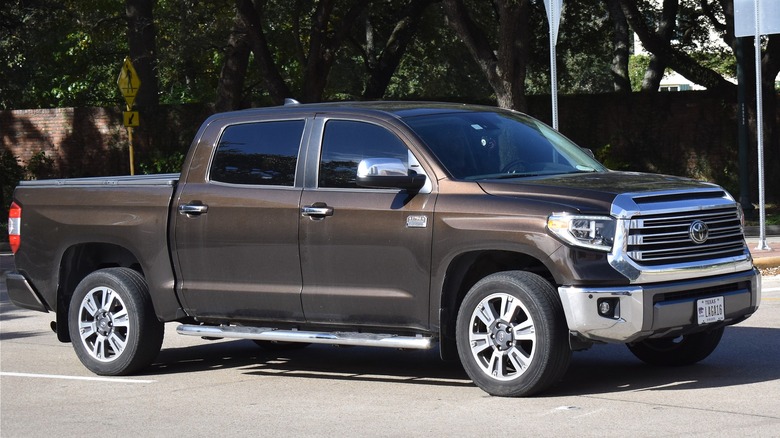
When it comes to off-road reliability, few automakers have a track record as solid as Toyota's. Across decades and continents, the auto producer's reputation has been forged by SUVs that aren't afraid to get dirty and don't flinch at the 200,000-mile mark. From the iconic Land Cruiser to the unique 4Runner and Hilux, these machines were designed to withstand the kind of wear that sidelines many off-road SUVs.
Some of the SUVs on this list are old-school, mechanical beasts with solid axles and body-on-frame
construction. Others are more modern, loaded with technology, and carry the same rugged DNA that has made Toyota a benchmark for long-term reliability. Whether you're planning solo rock-crawling adventures or weekend getaways with the family, there's a Toyota SUV built to handle it without any fuss. If you're after real-world durability, proven capability, or a bit of both, the Toyota SUVs below are ones you may want in your corner. Now, let's get into them.
Read more: 11 Of The Fastest Dodge Cars Ever Made, Ranked By Top Speed
Toyota RAV4
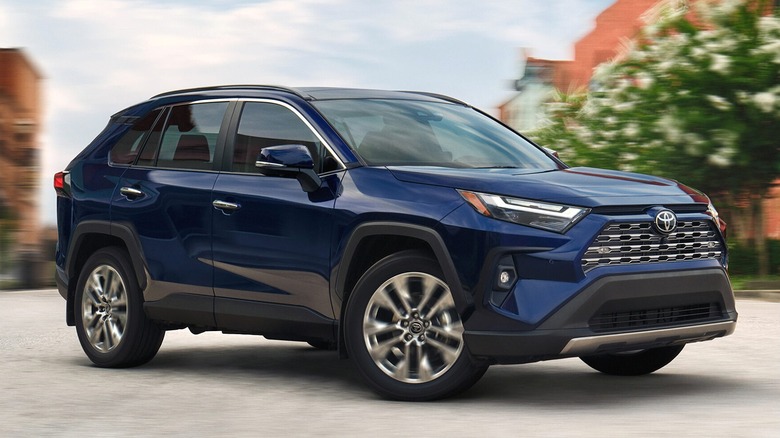
The RAV4 has been holding it down since '94 — the quirky Recreational Active Vehicle with 4WD has grown into Toyota's most popular model across North America and the best-selling SUV in the country. From early two-door FWD/4WD setups to today's efficient hybrids and plug-ins, the five-seater is the kind of SUV that fits just about any lifestyle.
Under the hood, the modern RAV4 runs a 2.5L four-cylinder putting out 203 hp, paired with an eight-speed automatic. Plug-in hybrids add extra flexibility, offering up to 42 miles of electric-only driving for quieter commutes or short errands. And when it's time to haul, hybrid versions step up with a towing capacity that tops out at 1,750 pounds, depending on trim. Older models were simpler, featuring 2.0L four-cylinder engines and offering the option of either a manual or automatic transmission. Some trims even included 4WD lock for extra grip on rougher roads.
That said, not every model year was a home run. The 2006 to 2008 RAV4s had their own headaches — namely, oil consumption and steering shaft complaints — and the 2019 RAV4 saw a wave of recalls and transmission hiccups. But buyers haven't been scared off -- over 1.1 million units sold in 2024 alone.
Toyota Land Cruiser (J80 Series)
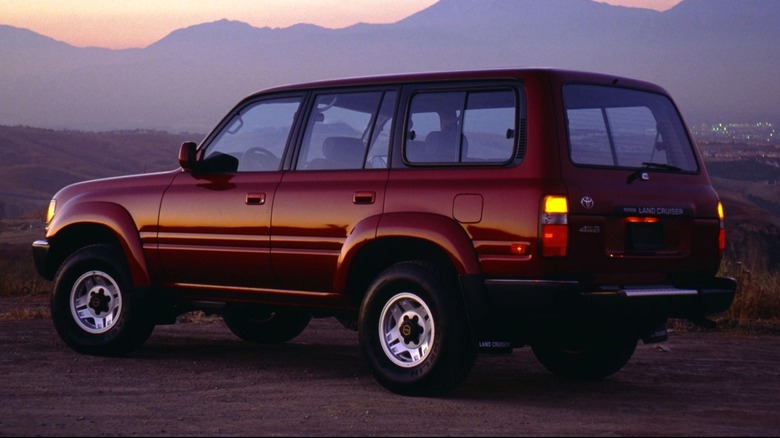
If you know Land Cruisers, then you know the 80 Series is something special. It rolled into America in 1990 by taking over from the FJ62, and wasted no time making a name for itself. Early models were available in both gas and diesel configurations, and in 1993, it gave it a real boost — swapping in a 212 hp 1FZ-FE inline-six. Plus, it came with rear disc brakes, a full-floating rear axle, and for the first time, front and rear differential locks.
This was also the first Land Cruiser to run full-time 4WD and a standard center-locking diff, making it a real beast off-road. The solid front and rear axles never went away, which not only gave the 80 Series great wheel articulation but also made it one of the last North American SUVs to keep that kind of rugged setup. You got A/C, rear heat, room for eight, and even a center console refrigerator, which was rare back then. No wonder Toyota later turned it into the Lexus LX 450.
The gas versions weren't the punchiest, and age brings the usual wear -- leaky steering, suspension fatigue, cracked boxes -- but nothing it can't bounce back from. With regular care, most 80s -- especially the FJ80s -- can sail past 300,000 miles. And even after all those miles, they remain some of the most mod-friendly Land Cruisers ever made.
Toyota Hilux
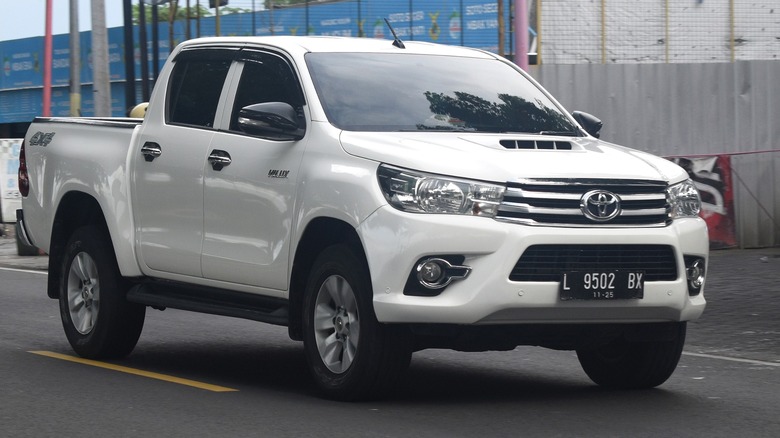
If there's one truck that has earned its stripes, it's the Toyota Hilux. This thing's been around since 1968, and with over 18 million units sold, it's clear people trust it to get the job done -- no matter where the job takes them. The present eighth-gen Hilux, which launched back in 2015, kept that no-nonsense DNA alive. It also shares bones with the Fortuner, but that doesn't dilute its toughness -- in fact, it's part of what makes it the most durable truck in Toyota history.
The Hilux is built on a ladder-frame chassis, with selectable 4WD and a locking diff. Engine-wise, you've got two diesel options: a 2.4L diesel that makes 148 hp or a beefier 2.8L gasoline engine that kicks out 201 hp and up to 369 lb-ft of torque. You can pair either one with a six-speed manual or automatic transmission, depending on the trim. And if you want it all, the Invincible trim's got the full package.
Toyota knows people hang onto Hiluxes for years, and it backs them up with a solid warranty. It starts with a 3-year base, but every time you service them, they tack on another year or 10,000 miles — that's up to 10 years or 100,000 miles in all. Plus, used ones aren't left out, either.
Toyota Fortuner
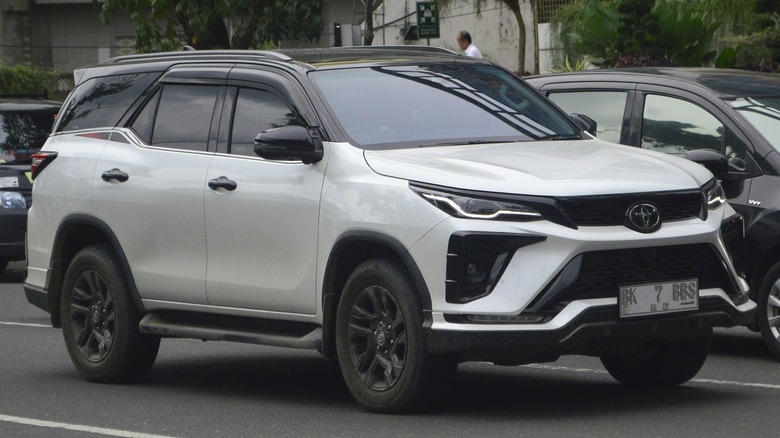
If you know the Hilux, you already understand what the Toyota Fortuner brings to the table. Came back in 2004, this seven-seater is a great fit for families who know what they want during off-roading. As part of Toyota's Innovative International Multi-Purpose Vehicle (IMV) project, it was designed with global markets in mind, which explains why you won't see it on American roads. However, in the regions where it is sold, it quickly became one of the brand's top-selling SUVs -- and for good reason.
Built on a ladder-frame chassis, the Fortuner doesn't shy away from the tough stuff, either. It's got double wishbone suspension up front, a multi-link setup in the rear, and proper off-road bits like selectable 4WD and a locking rear diff. Ground clearance is a healthy 279 mm, with a 2,745 mm wheelbase to keep things stable. Under the hood, there's a solid 2.4L diesel, but if you want more muscle, the 2.8L turbodiesel puts out 201 hp and 369 lb-ft of torque. That's more than enough for towing, climbing, or pushing through the deep stuff.
Of course, it's not without its flaws — some owners report turbo wear, transmission issues, and rear suspension fatigue on older ones over time. But those are easy to work on since parts are widely available.
Toyota Tundra
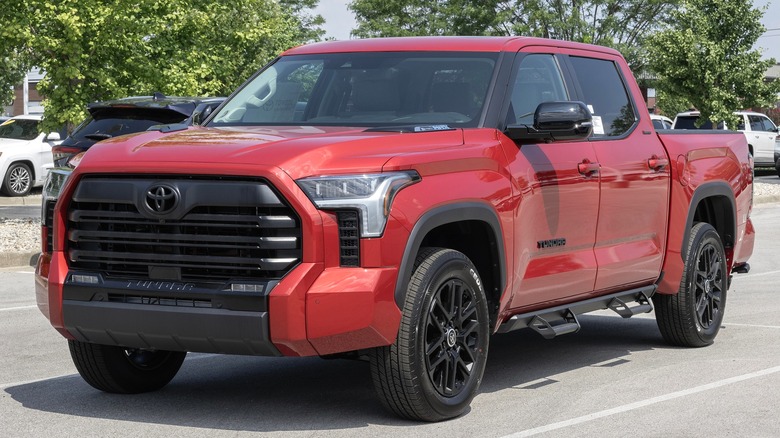
The Toyota Tundra has always been the quiet heavyweight in the full-size truck world. It rolled out first in '99, stepping in for the two-door T100, which marked Toyota's first real shot at the American pickup game. It's first-gen pulled up with a standout DOHC V8 that could tow over 3 tons, which was pretty solid for its time. In 2007, the second gen stepped in and stuck around for years -- especially models like the 2015 and 2021 models, which earned praise for both low complaints and strong reliability. The 2019 model had hiccups, too -- especially with fuel pump issues -- but even then, it was far from a flop.
Come 2022, Toyota rolled out the third-gen Tundra with a full redesign. The big V8 was swapped for a 3.5L twin-turbo V6, pushing out as much as 389 horsepower, or 437 hp with the hybrid i-FORCE MAX. Tundra is Toyota's powerhouse in this segment now -- more efficient, still very strong, and capable of towing over 10,000 pounds.
For off-roaders. TRD trims such as Off-Road, Pro, and Rally pack everything from locking rear diffs and skid plates to Bilstein or Fox shocks and Multi-Terrain Select. Ground clearance sits at a solid 9.4 inches, and with a boxed steel frame and the 10-speed transmission underneath, it's no softie. Sure, not every model year has been flawless — older ones like the 2005 had issues with its secondary air pump — but overall, the Tundra's track record speaks for itself.
Toyota 4Runner
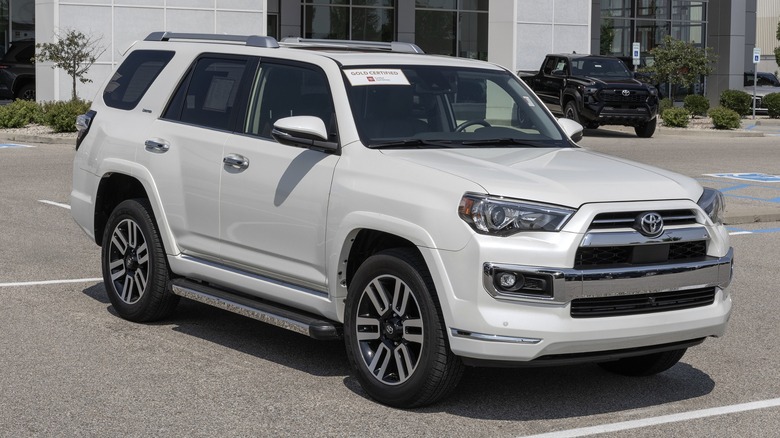
Few SUVs stick to their roots like the Toyota 4Runner. Since 1984, it's been a go-to for drivers who want real off-road capability without sacrificing long-term reliability. Models like the 2017 have earned near-perfect reliability scores, thanks to the time-tested 4.0L V6 and five-speed auto combo. The platform has barely flinched over the years, and for 2025's 4Runner, Toyota even added new muscle to it. The Trailhunter trim arrives fully kitted with ARB Old Man Emu suspension, a roof rack, low-lighting, and the new i-Force engine. And if you go hybrid, you will be looking at a wild 326 hp with a torque rating of 465 lb-ft. That's no slouch.
But if there's a generation that truly cemented the 4Runner's legend, it's the third one. Built between 1996 and 2002, it's one of the top Toyota 4Runner models built for the trail. These models -- especially the 1999 and 2002 -- are prized for their 3.4L V6s and smart upgrades like a double-wishbone front suspension. Many of them are still out there racking up 300,000+ miles with a little more than just routine care.
That said, old-school fans still rave about the fourth-gen 4Runner -- especially the 2009 Limited V8 4x4. With 260 horsepower, a 7,000-pound towing capacity, and 9.1 inches of minimum ground clearance, it has got the muscle and rugged hardware to back up its reputation.
Toyota Land Cruiser Prado
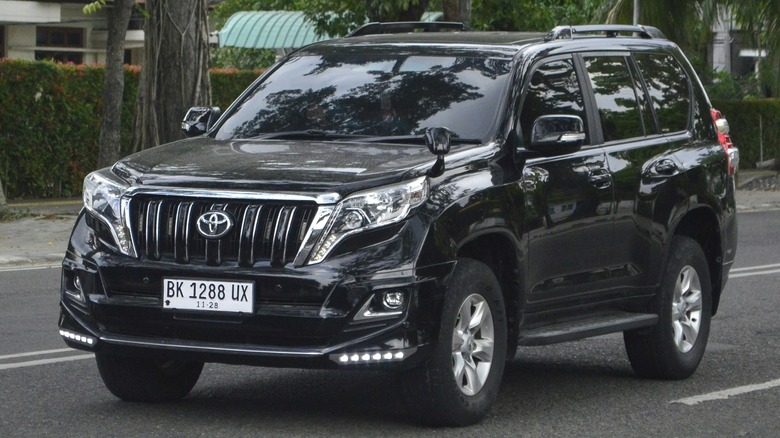
The Toyota Land Cruiser Prado has played the middleweight role in Toyota's legendary off-road lineup -- but don't mistake it for anything less than capable. Its name "Prado" meaning meadow in Portuguese — and fittingly, it carries that kind of quiet confidence that's made it a staple across Australia and beyond. Built on the rugged 70 Series platform and still called the Land Cruiser 250 Series in Japan, the Prado took off pretty fast — selling over 3,500 units in its first 30 days on the market.
Modern Prados ride on the same GA-F ladder-frame chassis as the Land Cruiser 300 and come loaded with all the right gear: crawl control, locking diffs, multi-terrain select, and a low-range transfer case. Later models brought more comfort into the mix, with optional rear air suspension and Toyota's Electronic Modulated Suspension system.
Powering it all is a 2.8L turbo-diesel introduced in 2015, known for strong torque and solid efficiency. Older Prados ran dependable engines, too — like the 3.4L V6 and 2.7L four-cylinder — that still hold up today. Add in seating for seven, 80-liter fuel tanks, and solid ground clearance, and you've got an SUV that can thrive anywhere.
Toyota Tacoma
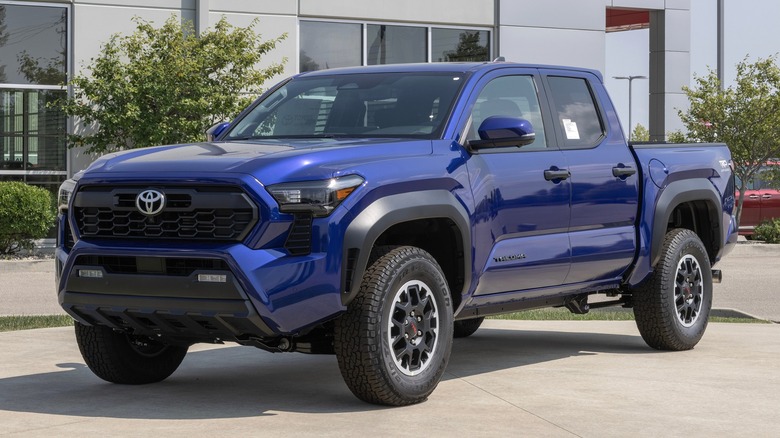
Since the Toyota Tacoma came out in '95, this SUV has been the kind of truck you buy when you want something that just doesn't quit. It didn't earn its name overnight — it did it out in the real world, through years of hard use and off-road grit. Even today, you can still spot the first-gen Tacomas out there doing exactly what they were built to do, and honestly, that alone says it all. Over four generations, the Tacoma has taken on different forms, each with its own tweaks -- but at its core, it has stayed true to its roots.
Its TRD Off-Road and TRD Pro trims come packed with the rough stuff like locking rear diffs, multi-terrain select, Crawl Control, and a suspension built to take hits. The new Trailhunter trim dials it up even more — Old Man Emu shocks, steel bumpers, all-terrain tires, and even a snorkel, all straight from the factory. Even the base trims get a punchy 2.4L turbo engine, and higher trims crank out up to 278 horsepower paired with either a manual or automatic transmission.
That said, the Tacoma 2024 model hasn't been perfect, with nearly two dozen owners reporting issues with the transmission, including rough shifting, limp mode, and early wear tied to torque converter problems. Although Toyota has acknowledged it with service bulletins, no full recall has been issued yet.
Toyota Sequoia
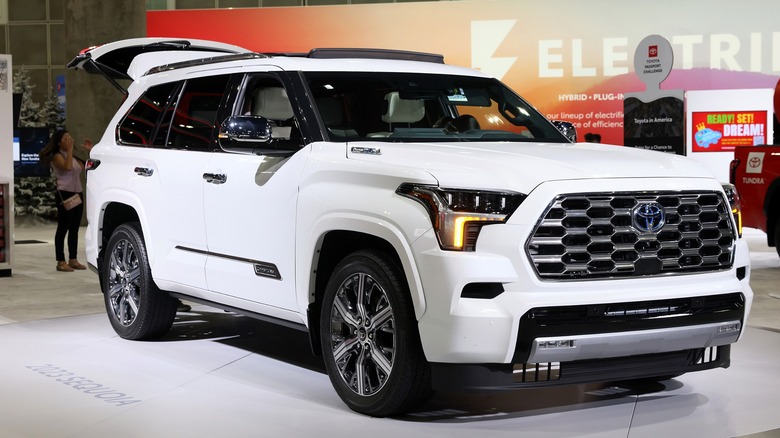
The Toyota Sequoia has always been a workhorse in Toyota's SUV lineup — big, reliable, and ready for just about anything. With a legacy spanning over 25 years, it enters its third generation for 2023 with a full redesign and a major shift under the hood. Plus, the old V8 is gone, replaced by a 3.4L twin-turbo V6 hybrid that cranks out 437 horsepower and 583 lb-ft of torque. With a 10-speed automatic and towing capacity north of 9,500 pounds, the new Sequoia is no slouch when it comes to real-world performance.
If you're looking to get it dirty, both the TRD Off-Road and TRD Pro trims have you covered. The TRD Pro packs Fox shocks and a dual wishbone setup up in front, while the TRD Off-Road brings in Bilstein shocks, Crawl Control, and a locking rear diff -- everything you need for off-the-grid adventures. Toyota ditched the independent rear suspension for a solid axle this time around — not as cushy on pavement, but it holds up better when the terrain turns rough.
Sure, some early owners have pointed out small issues like hybrid system quirks or brake noise, and even some earlier years like 2002 and 2010 have gotten a few recalls, but those aren't major. Toyota's long-term reliability still stands tall, and if history is any guide, years like 2011, 2015, and 2020 prove this SUV is in it for the long run.
Toyota Land Cruiser (J250 Series)
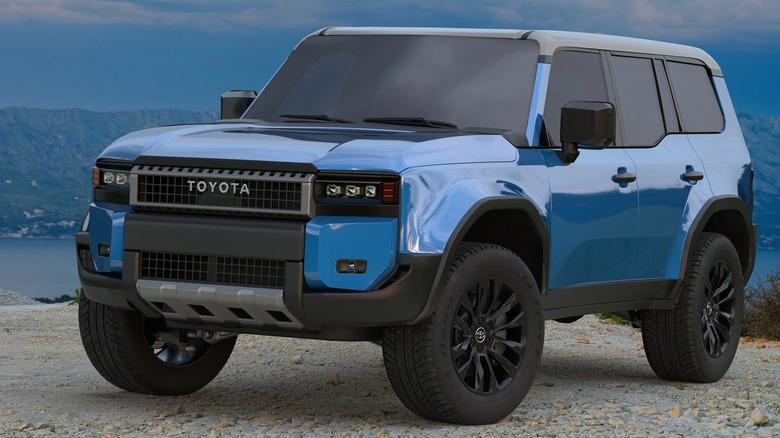
The 2025 Toyota Land Cruiser J250 marks a fresh chapter without forgetting where it came from. It's newer than the old 200 Series and skips the third row seat, but make no mistake — this thing still means business. Riding on the same frame as the global Prado, it's tough, capable, and now comes as a hybrid with a 2.4L turbo-four and eight-speed automatic — the first of its kind in North America.
Mechanically, you get full-time 4WD, a two-speed transfer case, and locking center and rear diffs — all in one. Add off-road tools like Downhill Assist Control, Multi-Terrain Select, and underbody armor to back you up when the terrain gets tricky. And in real-world testing, such as on Utah's White Rim Trail, the J250 held its own, showing that it can handle the tough stuff just fine. Additionally, feedback from owners has been promising, even though it is still relatively early.
Toyota Land Cruiser (J70 Series)

There's something timeless about the Toyota Land Cruiser J70. It's not the kind of SUV you fall for at first glance — but give it time, and boom. It rolled out in the mid-1980s with a clear mission — reliability over everything— and it's stuck to that ever since. You have got air conditioning, rear heating, and not much else in the way of comfort, but that was the beauty of it. It's just a machine you can count on while off-roading.
Though it was never officially sold in the U.S., its bones are as solid as they come. The heavy-duty suspension and body-on-frame chassis made it the go-to choice for people who live and work far from pavement. Whether you're behind the wheel of a 76 Wagon, a 78 Troop Carrier, or a 79 ute, the DNA is the same with the kind of simplicity that keeps you moving when parts and help are nowhere in sight.
Under the hood, you'll find engines built for the long haul — not speed. Whether it's the older 12H-T turbodiesel or the newer 4.5L V8 and 2.4L turbo-four, it's all about torque and dependability. Even with newer touches like USB ports, the J70 remains a utilitarian beast.
Toyota Mega Cruiser
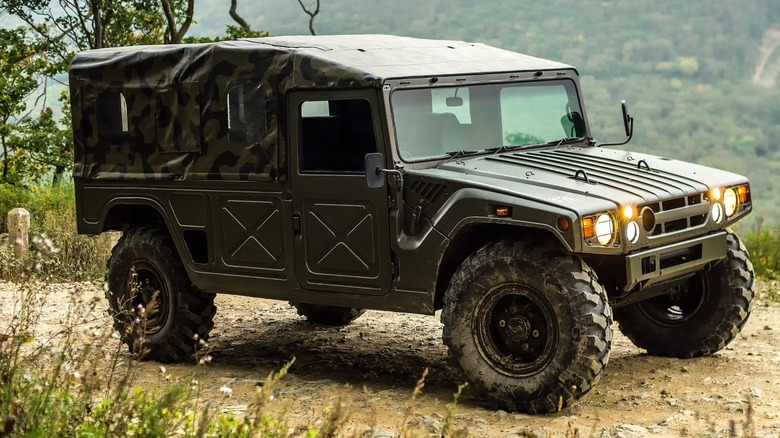
Not every SUV gets compared to a military tank, but the Toyota Mega Cruiser earns a spot on that short list. Originally made for Japan's Ground Self-Defense Force, it was Toyota's no-nonsense answer to the Humvee— a machine engineered to handle chaos while crawling through impossible terrain and whatever else got thrown its way. Toyota built around 3,200, the vast majority military models, with a scant 150 for the civilian market due to expense and impracticality.At nearly 17 feet long and tipping the scales at nearly three tons, the Mega Cruiser was massive. But size wasn't its only calling card. Under the hood sat a 4.1-liter turbo-diesel inline-four, putting out 153 horsepower and 282 lb-ft of torque. The four-speed auto kept things simple and reliable in remote areas where breakdowns weren't an option.
What really made the Mega Cruiser special was its hardware. Full-time four-wheel drive. Three locking diffs. Four-wheel steering. Inboard brakes. And yes, even a central tire inflation system if you wanted to adjust pressure to tweak for conditions on the ground. From its inboard disc brakes to its beefy suspension and reduction gears, every inch of the Mega Cruiser was built to survive the extremes in the best possible way.
Toyota Land Cruiser (J100 Series)
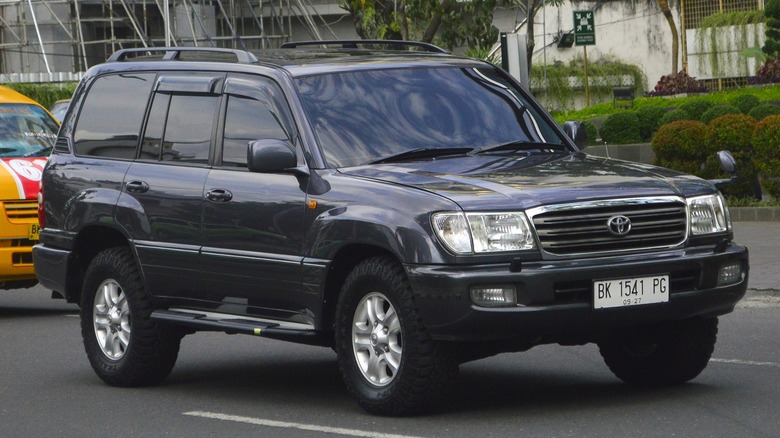
Last on the list, the J100 Series. Produced from 1998 to 2007, this SUV marked a real turning point for the Land Cruiser. It was the first to welcome a V8 under the hood — a 4.7-liter 2UZ-FE that quickly earned a loyal following for its strength, low maintenance needs, and long lifespan. There was also a 4.5-liter inline-six option early on, but the V8 was the clear favorite. Plus, the J100 didn't just look good. It aged well, too, retaining its design integrity when the final units rolled off the line in 2007.
Toyota kept its go-anywhere DNA intact with a body-on-frame chassis and full-time 4WD, but also added new tricks. This generation rolled in several Land Cruiser firsts — like auto-dimming mirrors, one-touch windows, and high-end tech such as night vision on upper trims. Even more impressive is that those features still function in many examples that have crossed 400,000 miles without a major issue, proving just how durable the J100 really is.
Like any long-running Land Cruiser, it had its highs and lows. A few model years, especially around 2005, saw complaints of axle seal leaks and transmission wear. But then you see years like 2002 that quietly reminded drivers why they kept coming back to Toyota. Still, during its 12-year span, every single unit was built in Japan. No wonder seasoned buyers still have it at the top of their used SUV wish list.
Want the latest in tech and auto trends? Subscribe to our free newsletter for the latest headlines, expert guides, and how-to tips, one email at a time.
Read the original article on SlashGear.













